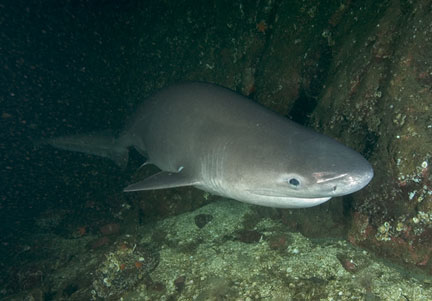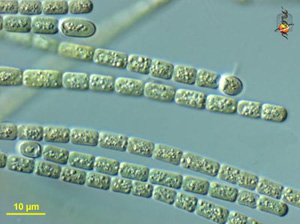- http://www.psteinmann.net/bio_schwaemme.html
- http://www.discoverlife.org/mp/20q?search=Phoridae
- http://www.restaurantwidow.com/2007/10/bay-scallops-ro.html
- http://plant-shed.com/index.php?p=page&page_id=snails
- http://forums.gtsplus.net/lofiversion/index.php?t33669.html
- http://www.utsc.utoronto.ca/~youson/lamprey-photo.htm
- http://pubpages.unh.edu/~wur2/fnlpics.html
- http://scienceblogs.com/grrlscientist/2009/03/evolution_of_african_synodonti.php
- http://animals.nationalgeographic.com/animals/amphibians/spotted-salamander/
- http://animals.howstuffworks.com/reptiles/alligator.htm
- http://www.dicklincoln.com/2009/09/08/hummingbirds-and-the-kingdom-of-god/
- http://www.ucdavis.edu/spotlight/0208/genes.html
- http://mrslizotte.com/index2.php?option=com_docman&task=doc_view&gid=164&Itemid=99999999
- http://zipcodezoo.com/Key/Animalia/Animalia_Kingdom.asp
- http://www.earthlife.net/inverts/porifera.html
- http://www.earthlife.net/inverts/annelida.html
- http://www.earthlife.net/inverts/mollusca.html
- http://www.earthlife.net/inverts/vertebrata.html
- http://www.sfetcu.com/book/Hagfish-species
- http://www.plantapalm.com/vce/species/cycas_rumphii.htm
- http://library.thinkquest.org/08aug/01323/ever.html
- http://www.supplementsandhealth.net/articles/do-you-take-ginkgo-biloba-read-this/
- http://tao-of-it.com/
- http://www.wallpapersphere.com/art-design-wallpapers/photography/green-beans.html
- http://www.biologie.uni-hamburg.de/b-online/d47/cycas.htm
- http://danmarkltd.tripod.com/taxonomy/id1.html
- http://wiki.answers.com/Q/What_happens_during_plant_respiration#ixzz17fVMJB61
- http://www.planet-pets.com/plntamba.htm
- http://www.flickr.com/photos/microagua/4353732916/
- http://www.bio.miami.edu/dana/160/160S10_9.htmlhttp://skepticwonder.fieldoscience.com/2010/08/random-picture-dump-parabasalid-mitosis.html
- http://bio.rutgers.edu/euglena/mainpage.htm
Monday, January 31, 2011
Works Cited
Saturday, January 29, 2011
Kingdom Animalia
- Describe:
- Animals are made up of cells that do not have cell walls.
- Animals are capable of motion in some stage of their lives.
- Animals are able to respond quickly to external stimuli as a result of nerve cells, muscle or contractile tissue, or both.
- Body Plan:
- multicellular
- Divergent Event:
- it is believed animal kingdom diverged from fungi kingdom
- Metabolism:
- heterotrophic
- Digestion:
- both intracellular and extracellular
- For example, in the phylum Porifora -which contains animals like sponges - uses intracellular digestion. This is when food is digested in each individual cell.
- Other more complex animal use extracellular digestion. This is when nutrients are digested in other digestive cavities then distributed throughout the body.
- Circulation:
- both closed and open
- Mollusks have an open circulatory system, though some do have a closed system.
- the phylum Annelid, has a closed system, where the aortic valve arches to replace the heart.
- Respiration:
- cellular respiration; gills book lung and lungs
- Nervous:
- Most animals have a central nervous system
- a brain which is attached to the rest of the body through a spinal cord
- Reproduction:
- sexually and asexually
- asexually - komodo dragons
- sexually - rabbits
- Examples:
- eagles
- dogs
- squirrels
Phylum Porifera
- Describe
- No definite symmetry. Cells and tissues surround a water filled space but there is no true body cavity.
- Body multicellular, few tissues, no organs.
- All are sessile, (live attached to something as an adult).
- Reproduce sexually or asexually, sexual reproduction can be either gonochoristic or hermaphroditic.
- Has no nervous system.
- Has a distinct larval stage which is planktonic.
- Lives in aquatic environments, mostly marine.
- All are filter feeders.
- Often have a skeleton of spicules.
- Examples
- Ephydatia fluviatilis

Phylum Annelida
- Describe -
- Bilaterally symmetrical and vermiform
- Body has more than two cell layers, tissues and organs
- Body cavity is a true coelom, often divided by internal septa
- Body possesses a through gut with mouth and anus
- Body possesses 3 separate sections, a prosomium, a trunk and a pygidium
- Has a nervous system with an anterior nerve ring, ganglia and a ventral nerve chord
- Has a true closed circulatory system
- Has no true respiratory organs
- Reproduction normally sexual and gonochoristic or hermaphoditic
- Feed a wide range of material
- Live in most environments
- Examples -
- Chaetogaster annandale -smallest Annelid known to science is which is full grown at 0.5 mm (0.02 ins)

Phylum Mollusca
- Describe -
- Bilaterally symmetrical.
- Body has more than two cell layers, tissues and organs.
- Body without cavity.
- Body possesses a through gut with mouth and anus.
- Body monomeric and highly variable in form, may possess a dorsal or lateral shells of protein and calcareous spicules.
- Has a nervous system with a circum-oesophagal ring, ganglia and paired nerve chords.
- Has an open circulatory system with a heart and an aorta.
- Has gaseous exchange organs called ctenidial gills.
- Has a pair of kidneys.
- Reproduction normally sexual and gonochoristic.
- Feed a wide range of material.
- Live in most environments.
- Example
- scallops

- snails

Phylum Chordata
Subphylum Vertebrata
- Describe -
- possession of a set of vertebrae
- skin is normally comprised of two sections; the outer epidermis which is secreted by the ectoderm and an inner endodermis which is secreted by the mesoderm.,
- normally have a closed circulatory system (veins and arteries) with a heart of 2,3, or 4 chambers
- most, if not all vertebrates have an endocrine system
- a complicated nervous system
- separate sexes
- complete digestive system with well developed associated glands such as the liver and pancreas ventral to the spinal column and with a separate mouth and anus
Class Myxini
- Describe
- Hagfishes look like eels and are about 18–30 inches (46–76 centimeters) long
- skeleton is made up of cartilage , or tough, bendable tissue, rather than bone.
- no fins or scales—flat, rigid plates that act as body covering.
- They do not have jaws but have two raspy, or rough, biting plates.
- The mouth is an oval slit surrounded by four barbels , which are long, thin feelers used for finding food.
- The single nostril is surrounded by another set of barbels. The eyes are two dents on the top of the head that are covered by skin, and the fishes probably cannot see with them.
- Hagfishes have six to ten pairs of gills, or breathing organs, which may open directly to the outside or join to form one gill opening.
- The color of hagfishes ranges from reddish brown to grayish pink.
- Hagfishes have about 100 to 150 slime glands along the sides of their bodies. Defense - themselves by producing slime.
- live in large groups on the ocean floor.
- Reproductive patterns are unknown. Fertilization is probably external.
- Example -
- Sixgill hagfish

Class Cephalospidomorphi
- Describe -
- jawless fish, whose adults are characterized by a toothed, funnel-like sucking mouth.
- Found in most temperate regions except those in Africa.
- Adults physically resemble eels, in that they have no scales, and can range anywhere from 13 to 100 centimetres (5 to 40 inches) long.
- unique morphological characteristics of lampreys, such as their cartilaginous skeleton
- Example
- sea lampreys

Class Chondricthyes
- Describe -
- jawed fish with paired fins, paired nares, scales
- two-chambered hearts
- skeletons made of cartilage rather than bone
- Example -
- great white shark

Class Osteichthyes
- Describe -
- characterized by a relatively stable pattern of cranial bones, rooted teeth, and medial insertion of mandibular muscle in lower jaw
- The head and pectoral girdles are covered with large dermal bones
- The eyeball is supported by a sclerotic ring of four small bones, but this characteristic is missing or modified in many modern species
- Example -
- catfishes

Class Amphibia
- Describe -
- cold-blooded or ectothermic animals
- start their life cycle underwater and move to land on the onset of their adulthood
- Generally carnivorous; while in water, consume a wide variety of fish, small reptiles, crustaceans and other amphibians
- most amphibians breed in freshwater, there are some species that breed in moist places , ex: burrows in the ground and among leaf litter or in wild habitats
- Examples
- salamander

Class Reptilia
- Describe -
- A tough, dry, scaly skin that is heavily keratinized
- Keratin- a resistant protein found in the epidermis of amniotes
- protective and prevents water loss across body surfaces
- Human hair and nails are made of keratin
- Few cutaneous (skin) glands are present
- The body is covered and protected by scales and scutes
- A strong, sturdy skeleton with a well-developed rib cage
- Large well-developed lungs
- Example –
- alligator

Class Aves
- Describe -
- highly adapted for flight although many species have lost the powers of flight
- They have scaly legs and feathers (which are specialized scales)
- They are toothless animals, but have a beak
- Example –
- hummingbird

Class Mammalia
- Describe-
- characterized by the possession of hair, three middle ear bones, a neocortex, and mammary glands functional in mothers with young
- Most posses sweat glands and specialized teeth
- Example –
- cat

Friday, January 28, 2011
Kingdom Plantae
- Describe:
- eukaryotic
- perform photosynthesis
- have chlorophyll
- cells walls made of cellulose
- Body Plan:
- muticellular
- Divergent Event:
- scientists believe land plants evolved from green algae
- Metabolism:
- autotrophic
- Digestion:
- none
- Circulation:
- only some plants have circulatory systems- vascular plants
- no heart
- Respiration:
- the chemical opposite of photosynthesis - it releases energy, using up food and oxygen and producing carbon dioxide
- the release of energy from food
- Nervous:
- none
- Reproduction:
- both sexual and asexual
- Sexual - roses
- asexual – maple tree
- Examples:
- Moss
- Shrubs
Phylum Cycadophyta
- Describe
- Dioecius
- Tropical and sub-tropical habitats
- Pachycaul stem
- Girdling leaf traces
- Coralloid roots
- Lack axillary buds
- Open carpophyll
- Woody, long-lived, unisexual plants. Main roots thickened, fleshy, often tuberous
- Environment -
- Tropical and subtropical latitudes in the Americas, Caribbean, sub-Saharan Africa, Madagascar, eastern India, China, Japan, southeast Asia, Oceania and Australia.
- Examples -
- Cycas rumphii

- evergreen

Phylum Gingkophyta
- Describe -
- distinctive fan shaped leaves & are dioecious (each tree is either male or female but not both)
- Enviroment -
- not native to North America (they are found growing wild only in China)
- Examples -
- Ginkgo biloba tree

Phylum Anthopyta
Class Monocotyledonae
- Describe -
- comprising seed plants that produce an embryo with a single cotyledon and parallel-veined leaves
- includes grasses and lilies and palms and orchids
- divided into four subclasses or superorders: Alismatidae; Arecidae; Commelinidae; and Liliidae
- Example -
- Hemerocallis flower

Class Dicotyledonae
- Describe -
- comprising seed plants that produce an embryo with paired cotyledons and net-veined leaves
- Example –
- beans

- ground nut

Thursday, January 27, 2011
Kingdom Archaea
- Describe:
- group of single-celled microorganisms
- Similar to bacteria in size and shape though a few have very strange shapes.
- commonly as spheres, rods, spirals or plates.
- Individual archaea range from 0.1 micrometers (μm) to over 15 μm in diameter
- Body Plan:
- unicellular
- Divergent Event:
- may be the most ancient lineage on earth.
- The oldest traces of archaen lipid remains come from the Isua district of west Greenland including Earth's oldest sediments - formed 3.8 billion years ago
- Metabolism:
- Both
- autotrophic - Nitrosopumilales
- heterotrophic - Thermococcus fumicolans
- Digestion:
- intracellular
- Circulation:
- none
- Respiration:
- none
- Nervous:
- none
- Reproduction:
- Asexual
- divide by binary fission, fragmentation or budding
- Examples:
- Sulfolobus acidocaldarius - found near volcanic environments in hot, acidic springs containing sulfur

- Pyrolobus fumarii - live in temperatures between 90 and 113 degrees Celsius

Kingdom Eubacteria
- Describe:
- large group of unicellular organisms
- Typically a few micrometres in length
- wide range of shapes, ranging from spheres to rods and spirals
- Body Plan:
- unicellular
- Divergent Event:
- ancestors of modern bacteria - single-celled microorganisms that were the first forms of life to develop on earth about 4 billion years ago.
- Here eukaryotes resulted from ancient bacteria entering into endosymbiotic associations with the ancestors of eukaryotic cells- which were themselves possibly
- Metabolism:
- both
- autotrophic – cyanobacteria
- heterotrophic - E. Coli
- Digestion:
- intracellular
- Circulation:
- None
- Respiration:
- None
- Nervous:
- None
- Reproduction:
- asexual
- Examples:
- Lactobacillus acidophilus – found in dairy products, Nitrogen Fixing Bacteria

- Cyanobacteria

- E. Coli

Subscribe to:
Posts (Atom)